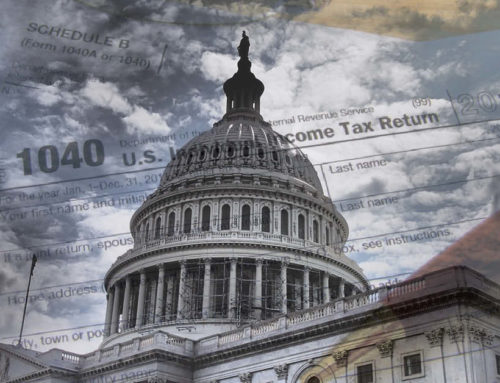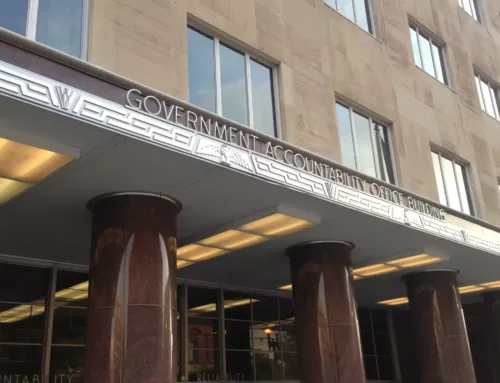TCS has just discovered that Senate leadership gutted earmark transparency rules that had initially passed the Senate 98-0.
S. 1, the ethics and earmark bill, was first considered in January. At that time, Sen. Jim DeMint (R-SC) offered what he called the Pelosi-DeMint earmark transparency amendment to the bill. This amendment did nothing more than apply the same earmark transparency rules to the Senate that the House of Representatives had overwhelmingly adopted days before. Senate Majority Leader Harry Reid (D-NV) tried to kill the amendment using a procedural move, but lost. After other ill-fated attempts to scuttle the provision, Senate leadership moved to save face by improving the measure – requiring disclosure on the internet.
To gut that original rule, they changed the disclosure language subtlety. Now, the only documents that will be publicly released are the relatively worthless statements from lawmakers that the earmarks they requested won’t result in personal financial gain.
One of the key provisions of the initial House language that the Senate adopted was that it required disclosure of not only the name of an earmark’s sponsor, but also the project’s beneficiary, location, and purpose. None of this information, including the name of the sponsoring member, had been disclosed before.
To fulfill the disclosure requirements, each Senator was to be required to include it in a letter to the relevant Appropriations Committee Chairperson. Section 521 in the January 2007 version of S.1 created a new “Rule XLIV on Congressional Directed Spending and Related Items.” This included the following provision::
6. (a) A Senator who requests a congressionally directed spending item, a limited tax benefit, or a limited tariff benefit in any bill or joint resolution (or an accompanying report) or in any conference report (or an accompanying joint statement of managers) shall provide a written statement to the chairman and ranking member of the committee of jurisdiction, including–
`(1) the name of the Senator;
`(2) in the case of a congressionally directed spending item, the name and location of the intended recipient or, if there is no specifically intended recipient, the intended location of the activity;
`(3) in the case of a limited tax or tariff benefit, identification of the individual or entities reasonably anticipated to benefit, to the extent known to the Senator;
`(4) the purpose of such congressionally directed spending item or limited tax or tariff benefit; and
`(5) a certification that neither the Senator nor the Senator’s immediate family has a pecuniary interest in the item, consistent with the requirements of paragraph 9.
`(b) Each committee shall maintain the written statements transmitted under subparagraph (a). The written statements transmitted under subparagraph (a) for any congressional earmarks, limited tax benefits, or limited tariff benefits included in any measure reported by the committee or conference report filed by the chairman of the committee or any subcommittee thereof shall be published in a searchable format on the committee’s or subcommittee’s website not later than 48 hours after receipt on such information.
In the July version of the legislation, paragraph 6(a) remained exactly the same. But they changed 6(b) to only require that the relatively worthless “no pecuniary interest” letters be made public. All the amplifying information about beneficiaries, location, and purpose are required to be submitted to the Committee, but not disclosed to the public. Here is paragraph (b) as it was signed into law:
`(b) With respect to each item included in a Senate bill or joint resolution (or accompanying report) reported by committee or considered by the Senate, or included in a conference report (or joint statement of managers accompanying the conference report) considered by the Senate, each committee of jurisdiction shall make available for public inspection on the Internet the certifications under subparagraph (a)(5) as soon as practicable.
Under the rule as it was rewritten, the information in sections 6(a)(1)-(4), the disclosure of beneficiaries, purpose and location, will now remain locked away as a Committee secret. That information will never be disclosed.
The Appropriations Committee staff has responded by saying that all the beneficiary information is in the report accompany the bill. This is not the case.
On page 239 of the Defense Appropriations Subcommittee report, in the Navy Research, Development, Testing and Evaluation (RDTE) section there is a $5,000,000 earmark for Single Generator Operations Lithium Ion Battery obtained by Sen. Harry Reid (D-NV). The public doesn’t know the location of the project, much less the beneficiary. But Sen. Reid noted in a September 18, 2007 press release that it went to Altair Nanotechnologies in Reno, NV.
Similarly on page 241 of the Defense Appropriations Subcommittee report, there is a $4,000,000 earmark for Bio/Nano-MEMS for Defense Applications obtained by Sen. Mitch McConnell (R-KY). The report has no information about the project, but Sen. McConnell noted in a September 11, 2007 press release that it goes to the Center for Defense Applications at the University of Louisville.
By eliminating real disclosure about the earmark beneficiaries, Senate leadership has revealed their contempt for earmark transparency. This is one of the most bald-faced bait and switches we’ve seen in Washington. In January, the Senate voted unanimously to provide this information. By July, Senators left the veneer of transparency but gutted the substance. This is a cynical move even by Washington standards.
To compare disclosure requirements please find attached an earmark disclosure letter from House Speaker Nancy Pelosi (D-CA) and an earmark disclosure letter from House Minority Whip Roy Blunt (R-MO). This is one of the dozens of letters that they each submitted – one for each earmark they obtained in the FY08 spending bills. This is followed by the disclosure letters sent by Sens. Reid and McConnell. This one letter covered all the earmarks that each of them obtained in the FY08 spending bills. The difference between transparency in the two chambers is stark. The Senate disregard for disclosure and transparency is making the House look the paragon of openness, but the Senate has set the bar pretty low.










